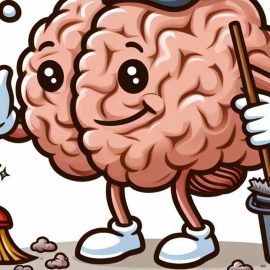

This article is an excerpt from the Shortform summary of "Nudge" by Richard H. Thaler and Cass R. Sunstein. Shortform has the world's best summaries of books you should be reading.
Like this article? Sign up for a free trial here .
What does nudging in education look like? How can it help students and communities?
Educational nudges are used to encourage better school choices and student attendance. Nudging in education can help individual students, their families, schools, and communities.
Read more about nudging in education and how it can help schools and students.
Nudging in Education
For some, “school choice” is anathema, calling to mind shuttered neighborhood public schools, fly-by-night charter schools, and woefully underserved students. For a libertarian paternalist, however, properly designed and regulated school choice can have significant positive effects on student performance. (In one study, an economist found that when public schools face competition from voucher or charter schools, the public schools produce better results: a 1%–7% improvement in test scores, with the largest gains coming in younger, low-income, or underrepresented-group students.)
Improving Choice
As is the case with 401(k)s and health insurance, choosing a child’s school can be a complex and daunting prospect—which is why so many parents simply choose to send their children to the nearest public school. And, as is the case with 401(k)s and health insurance, appropriate nudging in education makes choosing easier.
An experiment conducted in Charlotte, North Carolina shows how parents’ choices can be improved with more purposeful choice architecture. Normally, Charlotte parents are provided a 100-page booklet with briefs on each of the 190 schools in the district. Although the briefs feature some facts about the school, they omit physical location, test scores, attendance rates, and demographics (these facts are only available online).
When the experimental nudging in education was run, a random sample of parents were provided highly abbreviated “fact sheets”—with average test scores and acceptance rates—to see how the change in information would affect choice, especially among low-income parents. The experimenters found that low-income parents who received the fact sheets chose schools with 70% higher average test scores than their neighborhood schools; in fact, the school choices these low-income parents made indicated that the weight they placed on school performance had doubled compared to those that received the 100-page booklet.
Improving Incentive Conflicts
Better choice architecture can also help in school systems where asymmetrical information can create conflicting incentives—for example, where advantaged parents can game the system to the detriment of disadvantaged parents.
A “school choice” alternative to a voucher program is “controlled choice,” a system wherein students have priority at a local school or a school a sibling attends but can apply anywhere. Boston, for example, from 1988 through the early 2000s, employed an algorithm to try to accommodate students’ first-choice schools while giving students priority at their local schools.
The problem with the Boston system is that, once you intuit (or simply know) the algorithm, you can work it in your favor. For example, say your first choice is your local school. If you understand the algorithm, you know that you have priority at your local school, so you would never list it as a first choice (because you wouldn’t need the “priority boost” of listing it first); by the same token, if your first choice was a distant, high-demand school, you would never list it second, because then you’d lose out to both the local students and the students listing it first.
Better educated and more affluent parents were able to recognize the rules of the game sooner, relegating students with less-educated or lower-income parents to less desirable schools. It wasn’t until a team of Harvard economists pointed out these flaws and suggested a strategy-proof mechanism that Boston reformed its system.
Improving College Attendance With Nudging in Education
A college degree has never been more essential than in today’s job market, yet 30% of US high school graduates choose to forego higher education. But what if, to earn your high school diploma, you had to apply to college?
This was the nudge employed by San Marcos High School in Texas in an effort to increase Latino student enrollment in Texas colleges. The strategy was this: make an application to nearby Austin Community College (ACC) a requisite for graduation, and have ACC admissions officers help guide students through the application process. (The admissions officers recognized the importance of “salience” (see Chapter 5): rather than preach to the students about “learning for its own sake” or the “life of the mind,” they told them that a college degree could be the difference between driving a KIA or a Mercedes-Benz.)
The nudging in education paid off: In one year, San Marcos High School graduates attending college rose by 11%.

———End of Preview———
Like what you just read? Read the rest of the world's best summary of Richard H. Thaler and Cass R. Sunstein's "Nudge" at Shortform .
Here's what you'll find in our full Nudge summary :
- Why subtle changes, like switching the order of two choices, can dramatically change your response
- How to increase the organ donation rate by over 50% through one simple change
- The best way for society to balance individual freedom with social welfare






